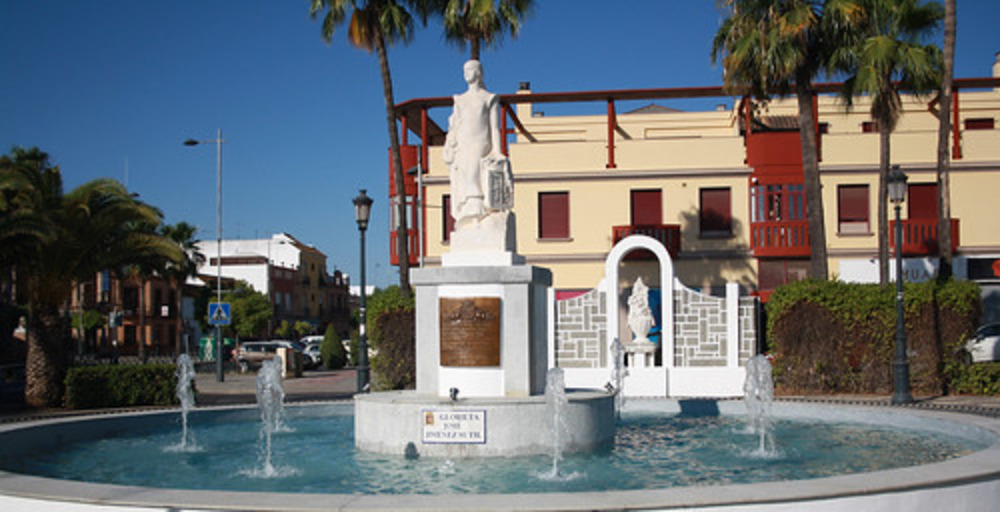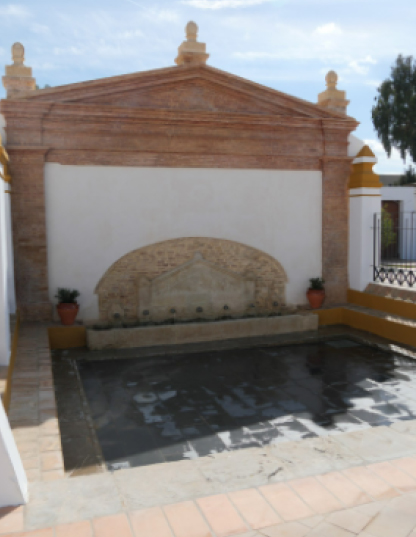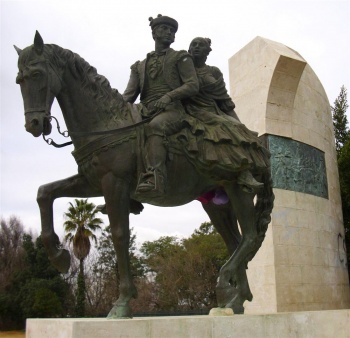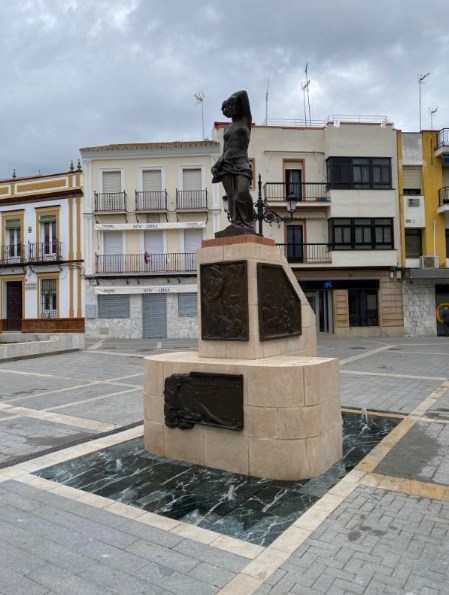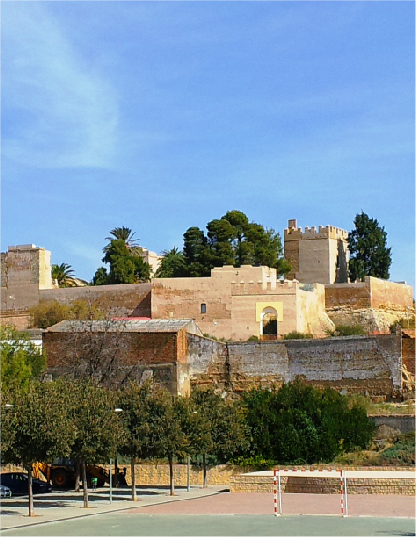1. Allegory Fountain to Mairena:
Chronology: 1962
Author: Antonio Gavira Alba
Monumental fountain dedicated to the population of Mairena del Alcor, representing the most significant elements of the locality: oranges, the castle, and the fair. Located in the promenade, it is a traditional meeting and celebration place, once used as a fairground and the venue for the Antonio Mairena Flamenco Festival until the end of the 20th century.


